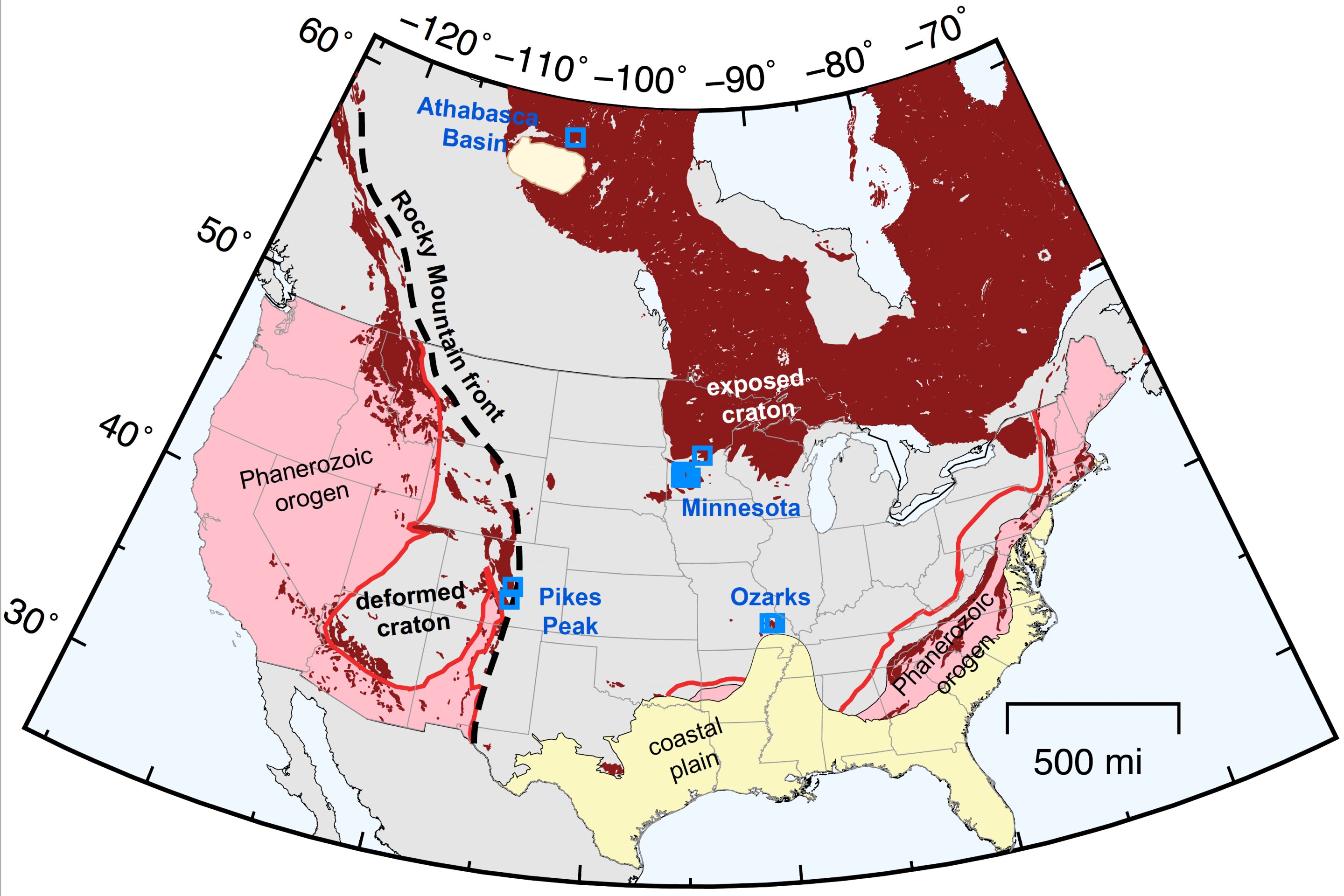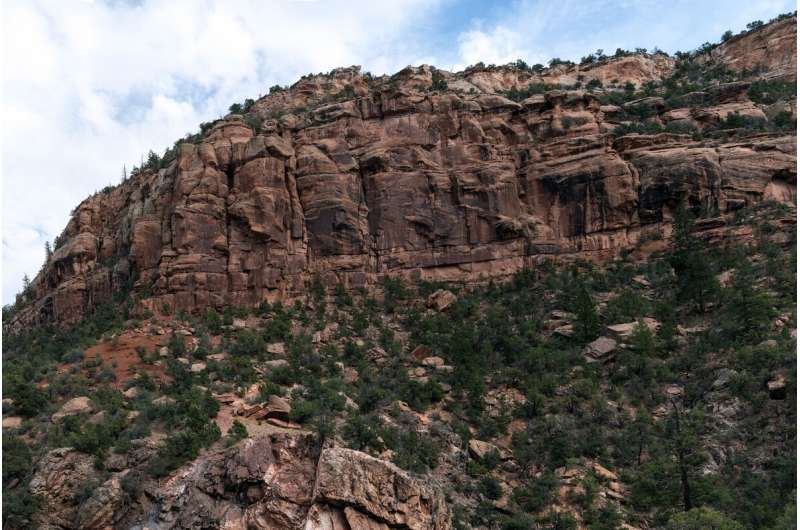

A study published in the Proceedings of the National Academy of Sciences shows that rocks representing up to a billion years of geological time were carved away by ancient glaciers.
There is a debate over what caused the Great Unconformity, a time gap in the geological record associated with the erosion of rock up to 3 miles thick.
One of the most puzzling features of the rock record is the fact that so many places are missing the sedimentary rocks from this time period.
The Great Unconformity was first named in the Grand Canyon in the late 1800s. The geological feature is visible where rock layers from distant time periods are sandwiched together, and it is often identified where rocks with fossils sit directly above those that do not have fossils.
Kalin McDannell, the lead author of the paper, said that the Great Unconformity set the stage for the Cambrian explosion of life.
Researchers have been trying to understand the cause of the missing geological time for over a century.
The rock was carved away by ancient glaciers during the Snowball Earth period about 700 to 635 million years ago, according to one of the opposing theories. The other focuses on plate tectonic events that took place during the assembly and break up of the supercontinent Rodinia from 1 billion to 550 million years ago.
The loss of rock was caused by widespread erosion by continental ice sheets. Large amounts of mass erosion matched with the Snowball Earth period according to the proxies.
Keller said that the new research confirms and advances the findings of the earlier study.
The assessment is made using a detailed interpretation of thermochronology.
Researchers can estimate the temperature that mineral crystals experience over time as well as their position in the continental crust by using thermochronology. The histories can show when missing rock was removed and when rocks exposed at the surface may have been exhumed.

The researchers used multiple thermochronometric data taken across four locations. The areas that are known as cratons are parts of the continent that are stable and not prone to plate tectonic activity.
By running simulations that looked for the time-temperature path the rocks experienced, the research recorded a widespread signal of rapid, high magnitude cooling that is consistent with about 3-4 miles of erosion during the Snowball Earth glaciations across the interior of North America.
While other studies have used thermochronology to question the glacier origin, a global phenomenon like the Great Unconformity requires a global assessment.
The research team believes that the competing theory of tectonic activity carving out the missing rock was put forth in 2020 when a separate research group questioned whether ancient glaciers were erosive enough to cause the massive loss of rock. The research used an alternate technique at a single location and suggested that the erosion occurred prior to Snowball Earth.
Keller said that the underlying concept is simple: Something removed a lot of rock, resulting in a lot of missing time.
The emergence of complex organisms about 530 million years ago during the Cambrian explosion is explained by the new findings. The building blocks of complex life are thought to have been provided by the fertile environment that was deposited in the ocean during the Snowball Earth period.
The study states that the two hypotheses of how the eroded rock are not mutually exclusive and that it is possible that both tectonics and glaciation contributed to global Earth system disruption during the formation of the Great Unconformity. It appears that only glaciation can explain the erosion in the center of the continent.
It may be that the reconstruction of the Rodinian continents along with the unique environmental conditions of the Neoproterozoic proved to be a time of geologic serendipity unlike any other.
This is the first research that uses the thermochronology modeling approach to study a period that goes beyond a billion years. In the future, the team will test the hypotheses about how the Great Unconformity was created and preserved on other continents.
Understanding early Earth history and the connection of climatic, tectonic and biogeochemical processes is dependent on resolving differences in the research.
McDannell said that the fact that there may have been tectonic erosion along the craton margins does not rule out the possibility of glaciation. A global examination will tell us more.
The paper was co-authored by William Guenthner from the University of Illinois at Urbana-Champaign, Peter Zeitler from the University of California, Berkeley, and David Shuster from the University of California, Berkeley.
More information: Kalin T. McDannell et al, Thermochronologic constraints on the origin of the Great Unconformity, Proceedings of the National Academy of Sciences (2022). DOI: 10.1073/pnas.2118682119 Journal information: Proceedings of the National Academy of Sciences Citation: New research strengthens link between glaciers and Earth's 'Great Unconformity' (2022, January 25) retrieved 26 January 2022 from https://phys.org/news/2022-01-link-glaciers-earth-great-unconformity.html This document is subject to copyright. Apart from any fair dealing for the purpose of private study or research, no part may be reproduced without the written permission. The content is provided for information purposes only.